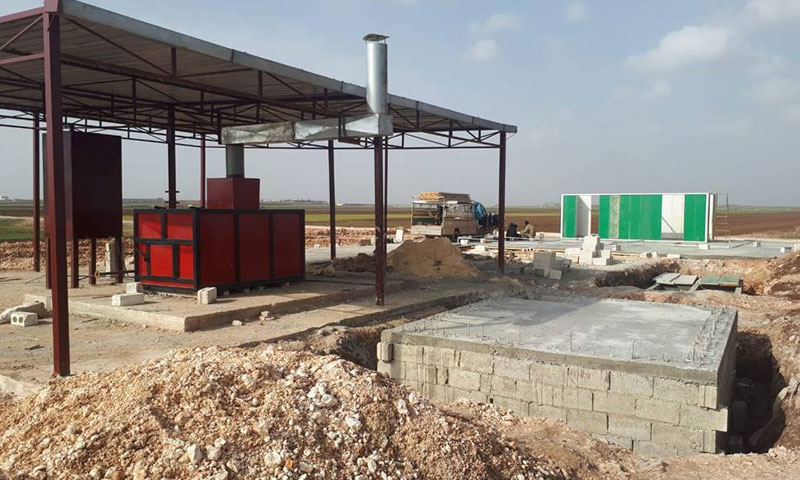



With the new hospitals being founded in northern rural Aleppo, which have a massive capacity at accommodation, the need arose to establish a proper system for riding of medical waste in the area, as to mitigate the health-related risks resulting from burning the waste randomly.
In cooperation with Syria for Relief and Development/SRD organization, the medical office under the Mare’ City Local Council launched the medical waste incinerator project, which deals with the waste produced by healthcare centers, hospitals and laboratories.
The incinerator is expected to start working early this month; it has the capacity to accommodate all the waste resulting from the area’s hospitals and healthcare centers, according to a plan designed to this end.
In an interview with Enab Baladi, Tareq Najar, director of the medical office under the city’s local council, said that the idea was developed since the hospitals’ waste always consists of lethal materials or sharp tools, pointing out that the hospitals used to approach the matter individually, as they dug holes and burned medical waste in them.
However, with the incinerator, all the medical waste is to be collected as to be rid of, complying with the environmental standards and under conditions that ensure the safety of the people residing in areas where the incinerator is to work.
He pointed out that the project is designated for the whole region, not the city of Mare’ alone, for “there is a plan that covers the hospitals in northern and eastern rural Aleppo.”
Najar pointed out that the greatest benefit of this project is limiting the proliferation of diseases and epidemics and bounding the waste to a single location and preventing its spread in a random manner.
According to the “Healthcare Waste Guidance Manual,” issued by the World Health Organization/WHO in 2006, exposure to medical waste might cause diseases, and the danger of the healthcare waste is attributed to their containing contagious, poisonous or radioactive materials.
The Guidance Manual also points out that all the people exposed to healthcare waste are at a risk, including those working in the healthcare centers where lethal waste is produced, and those who are not directly exposed to the sources of the waste.
Exposure to these waste materials might lead to different types of infections, such as intestinal infection, caused by salmonella bacteria, in addition to respiratory, eye, skin, reproductive tract infections, and meningitis and blood poisoning.
WHO’s Guidance manual indicates that 75 to 90% of the healthcare waste might not be lethal, as is, to a massive extent, similar to home-generated waste, produced mostly by office-related jobs and housekeeping of the healthcare centers. But still, 10 to 25% can cause various risks.
According to Tarek Najar, director of the medical office under the local council, the incinerator’s temperature might reach 900 degrees, where waste is placed and burned by the devices.
As for the burning process’ waste materials, they are buried underground, where another room is designated for burning organic waste.
The process of incineration and other methods of waste disposal using high temperature is called heat treatment. The process involves turning the waste into ash that is directed down the chimney. The released gases and the heat can be used to generate electricity.
The work of these incinerators includes various types of waste, classified by the World Health Organization into several categories, such as infectious waste suspected to contain infectious agents, including napkins and body waste.
And pathological waste categories such as body parts, blood, embryos; pharmaceutical waste such as expired pharmaceuticals or their containers, as well as waste toxic to genes, such as cancer drugs.
if you think the article contain wrong information or you have additional details Send Correction